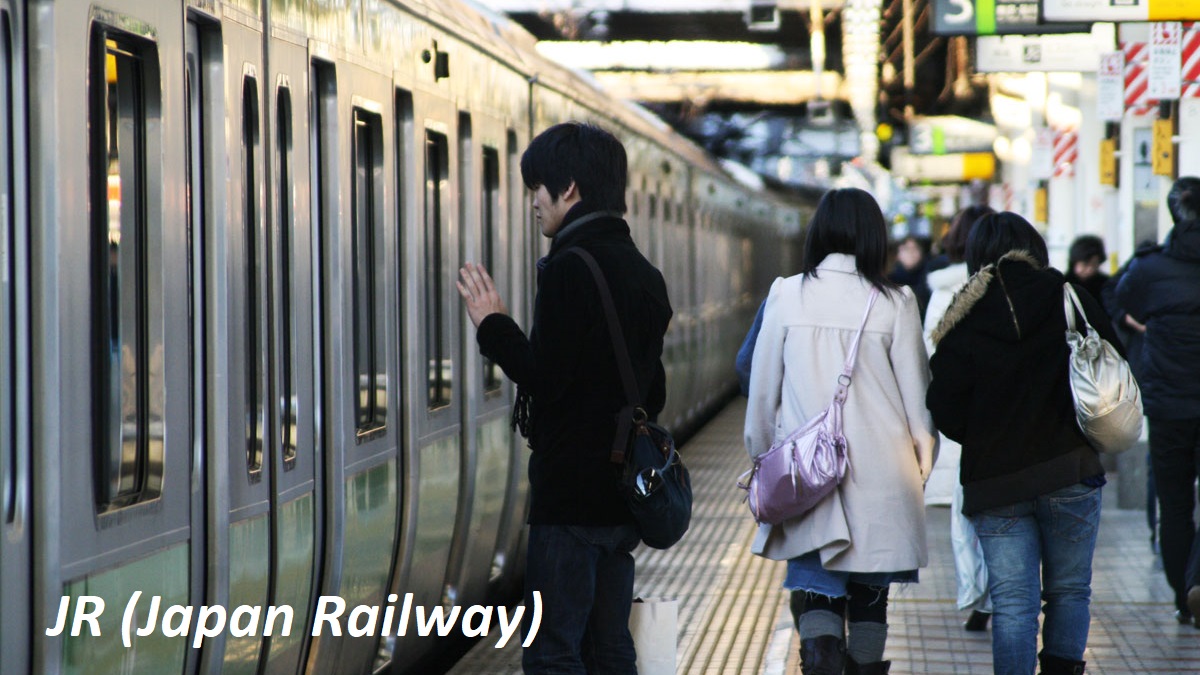JR (Japan Railway)
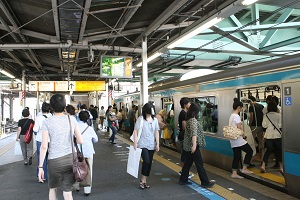
"JR" stands for "Japan Railway".
It was originally the Japan National Railways.
It was privatized and divided into six JR companies by regions and a freight company in 1987.
It has a network of railway covering the all country of Japan, and includes all Shinkansen routes.
JR companies are placed in each region, but you can buy the nationwide ticket at any JR station without worrying about such situation.
About JR line
In Japan, there are JR line and many other railway companies.
Of course, because "JR" doesn't include the other railway companies, you can use only JR network by JR ticket.
Shinkansen is included in JR.
But, subways and monorails in all big cities are not included in JR line. Most of them are managed by the city government.
You can use Japan Rail Pass for only JR line
When you travel around Japan, you may use "Japan Rail Pass".
It is sold by JR companies, so you can use it for only JR line.
As mentioned above, because the other railway companies, subways and monorails are not JR, you can't use the trains by Japan Rail Pass.
Types of JR train
Basically, JR has three types of train.
- Local train ("Futsû", [普通]) stops at all stations.
- Rapid train ("Kaisoku", [快速]) stops at only main stations.
- Limited Express ("Tokkyû", [特急]) is fast long-distance train and stops at main cities.
- Shinkansen [新幹線] is very fast limited express running on exclusive rails.
Because rapid train stops at only main stations, it is faster than local train.
When you get on limited express, the limited express fee is added to the fare.
Shinkansen is also a kind of limited express, and the limited express fee for Shinkansen is added to the fare.
If you have Japan Rail Pass, you can get on all types of JR train except of the Shinkansen trains named as "Nozomi" and "Mizuho".
Only one night train is operated
Because JR is a nationwide railway company, many night trains had ever been operated on most main lines every day.
But, because many passengers select Shinkansen or airplane to reach their destination within that day, the demand for night train fell away.
Now, only one night train is operated. (Tokyo - Izumo, Takamatsu)
Rather, the operation of night bus is increasing.
If you want to travel in one night, you should select night bus.
JR lines in the east part of Honshu Island
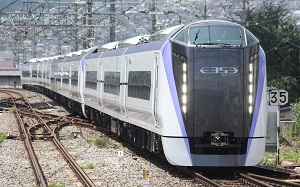
Limited Express from Shinjuku to Matsumoto, Photo by Railstation.net
JR lines in the east part of Honshu Island are managed by JR East.
The main lines are Tohoku, Joetsu, Hokuriku, Yamagata and Akita Shinkansens, and a network of JR local lines covers this area.
You can transfer to JR lines at most stations of Shinkansen.
And, there are many JR lines around Tokyo, and the trains are operated frequently from around 5:00 to 25:00.
JR lines in the central Tokyo
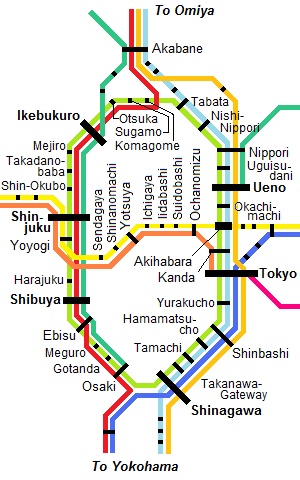
When you visit Tokyo, you may often use JR lines.
In central Tokyo, there is a loop line "Yamanote Line". (Yellowish green line on the route map)
It passes Tokyo station (the biggest terminal), Yurakucho (near Ginza), Hamamatsucho, Shinagawa (entrance to Haneda Airport), Shibuya, Harajuku, Shinjuku, Ueno, Akihabara, etc.
And, Chuo Line (Deep orange color line) and Sobu Line (Yellow line) runs east and west.
In parallel with these lines, the trains with various routes and directions are operated.
Inside the loop of Yamanote Line, many subway lines run. But they are not JR.
JR lines in the middle part of Honshu Island
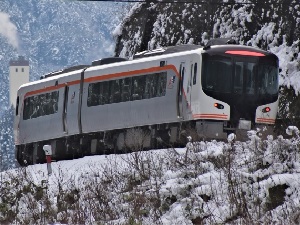
Limited Express from Nagoya to Takayama
JR lines in the middle part of Honshu Island are managed by JR Central.
The main lines are Tokaido Shinkansen, and a network of JR local lines covers the area around Nagoya and Shizuoka.
A main JR line runs along Tokaido Shinkansen, and a few other lines to Takayama, Nagano, Ise and Kumano branch at Nagoya.
JR lines in the west part of Honshu Island
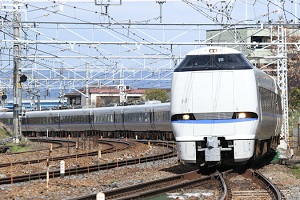
Limited Express from Osaka to Kanazawa, Photo by Railstation.net
JR lines in the west part of Honshu Island are managed by JR West.
The main lines are San-yo Shinkansen, and a network of JR local lines covers Kansai area (around Osaka, Kyoto, Nara, Kobe), Hokuriku area (around Kanazawa) and Chugoku area (around Okayama, Hiroshima).
And, there are many JR lines around Osaka, and the trains are operated frequently from around 5:00 to 25:00.
JR lines in the central Osaka
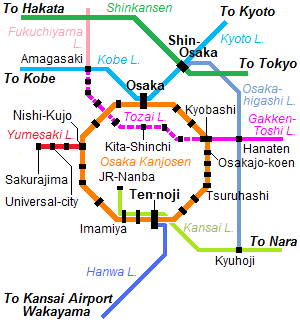
In central Osaka, there is a loop line "Osaka Kanjosen". ("Kanjosen" means "loop line".)
It passes Osaka station (the north terminal in Osaka), Osakajo-koen (near Osaka Castle), Ten-noji (the south terminal in Osaka), etc.
And, some JR lines to Kyoto, Kobe, Nara, Kansai Airport, Wakayama, etc. branch at the stations on Osaka Kanjosen.
Inside Osaka Kanjosen, many subway lines run. But they are not JR.
And a few other railway companies have the terminal stations inside Osaka Kanjosen.
JR lines in Hokkaido Island
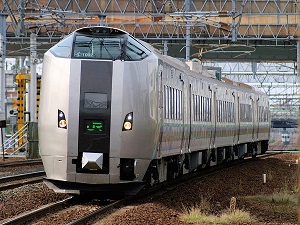
Limited Express from Sapporo to Asahikawa, Photo by Railstation.net
Hokkaido Shinkansen reaches Hakodate at the south part of Hokkaido.
But, because central city of Hokkaido is Sapporo, main trains are operated from sapporo to each part of Hokkaido (Hakodate, Asahikawa, Kushiro, Abashiri and Wakkanai).
The nearest airport of Sapporo is Shin-Chitose Airport, and is located about 40km southeast of Sapporo.
Between the airport and Sapporo, Asahikawa, many limited expreses and rapid trains are operated.
The trains around Sapporo are operated relatively freqently, but there aren't many times of operation in the other wide area.
JR lines in Shikoku Island
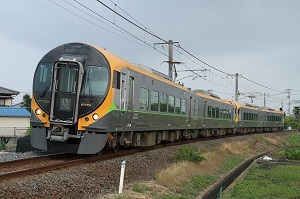
Limited Express from Takamatsu to Matsuyama, Photo by Railstation.net
In Shikoku Island, main cities are Takamatsu, Tokushima, Matsuyama and Kochi. And each city is not so big.
JR lines in Shikoku are connected between Takamatsu and the other three cities mainly.
And, there is a bridge which connects Honshu Island and Shikoku Island over the Seto Inland Sea.
From Okayama, the trains to each cities in Shikoku are also operated across the bridge.
JR lines in Kyushu Island
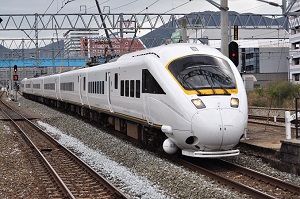
Limited Express from Hakata to Nagasaki, Photo by Railstation.net
In Kyushu Island, the central city is Fukuoka.
San-yo Shinkansen and Kyushu Shinkansen run along the west coast of Kyushu.
Main JR lines are the line to Nagasaki on the western peninsula and the line along the east coast.
Many limited express are operated on above lines.
There is no railway in Okinawa Island.

